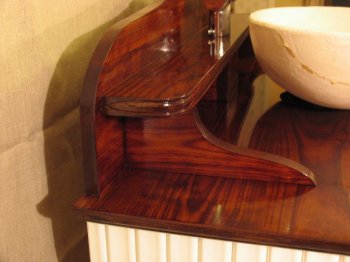condeesteso
Established Member
Stem and stock sounds good to me... as I regard the tool in its entirety as a 'scratch-stock' - so stem & stock works I feel. Talking of journeymen, I came across a Journeyman's tool bag recently, circa 1900, Canadian (or poss N E States). About 20" long, a roll of thick leather, circular wood ends, 2 straps wrapping round the cylinder into a handle. I have a pic somewhere, and plan to make a copy. Have made the wood ends already (cherry, but the original was rough softwood). Sorry to digress!
Now, just found the pic, see thread re 'tool bag'.
Now, just found the pic, see thread re 'tool bag'.









